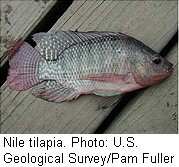healthnewslink
Diet and Fitness Newsletter
March 19, 2012 |
| In this Issue |
|
|
|
|
Following Heart-Healthy Behaviors May Lengthen Your Life
Study found those who stuck by all seven guidelines lived longer than those who didn't
 SATURDAY, March 17 (HealthDay News) -- People who follow seven recommended cardiovascular health behaviors are much less likely to die than those who follow few or none of the behaviors, according to a study that included nearly 45,000 U.S. adults.
However, the researchers also found that few adults follow every cardiovascular health behavior recommended by the American Heart Association (AHA), which include: not smoking; eating a healthy diet; having normal cholesterol, blood glucose and total cholesterol levels; being physically active and having normal blood pressure.
Cardiovascular disease is the leading cause of death in the United States. It kills more than 800,000 people a year and accounts for about one in three deaths, with estimated annual direct and overall costs of $273 billion and $444 billion, respectively, according to the researchers.
They looked at 44,959 adults, aged 20 and older, using data from the U.S. National Health and Nutrition Examination Survey (1988-94, 1999-2004 and 2005-10) and a linked database of deaths.
Only a few adults followed all seven recommended health behaviors -- 2 percent in 1988-94 and 1.2 percent in 2005-10. Those most likely to adhere to a greater number of recommended health behaviors included younger people, women, whites and those with higher education levels.
After 14.5 years of follow-up, those who followed six or more of the health behaviors had a 51 percent lower risk of all-cause death, a 76 percent lower risk of death from cardiovascular disease, and a 70 percent lower risk of death from ischemic heart disease, compared to those who followed one or fewer of the health behaviors.
In addition, people who followed a greater number of the health behaviors had a lower risk of death from cancer, according to lead researcher Quanhe Yang, of the U.S. Centers for Disease Control and Prevention, and colleagues.
They also found evidence suggesting that following the recommended health behaviors might offer greater protection against premature death from cardiovascular disease among people under age 60.
"As diabetes, obesity and sedentary lifestyle are on the rise, it is crucial that we establish and reinforce these parameters in every individual," said Dr. Suzanne Steinbaum, director of women and heart disease at Lenox Hill Hospital in New York City and a spokeswoman for the AHA. "With the American Heart Association's goal to reduce the incidence of cardiovascular disease by 20 percent by the year 2020, these health metrics are critical in determining the best course of action by both patients and doctors to prevent heart disease."
The study appears online Friday in the Journal of the American Medical Association, to coincide with its presentation at an American Heart Association meeting.
There are many ways to improve the cardiovascular health of Americans, according to an accompanying editorial by Dr. Donald Lloyd-Jones, of the Northwestern University Feinberg School of Medicine in Chicago.
"Despite the apparent difficulties in achieving the goal, there is much to be optimistic about, and opportunities abound for physicians, policy makers, and consumers to support improvements in cardiovascular health. Continued focus through the health care system on meeting primary and secondary prevention targets is critically important, so that individuals at risk can take one step forward from poor to intermediate cardiovascular health," Lloyd-Jones wrote in a journal news release.
"Advocacy will be needed for new public health and social policies to tilt the playing field toward healthier choices, so more individuals can move from intermediate to ideal levels or maintain ideal cardiovascular health," Lloyd-Jones added. "The debate over this year's farm bill, which will set policy for years to come, represents an opportunity for advocacy for cardiovascular health and a healthier food supply for all. Efforts to reduce sodium in the food supply are ongoing on multiple fronts."
More information
The U.S. National Institutes of Health outlines how to reduce heart risks.

|
Could Trans Fats Make You Cranky?
The more of the unhealthy dietary fat people ate, the greater their irritability, aggression, study shows
 THURSDAY, March 15 (HealthDay News) -- Eating a diet high in trans fatty acids, an ingredient found in fried foods, baked goods and other prepared meals and snacks, might be associated with negative -- and even aggressive -- behavior, new research suggests.
In conducting the study, researchers from the University of California, San Diego School of Medicine analyzed the diet and behavior of 945 men and women. They also considered other possible contributing factors, such as the participants' history of aggression as well as alcohol and tobacco use.
The study, published online recently in PLoS ONE, found that people who consumed more trans fats were more likely to demonstrate negative behaviors, such as impatience, irritability and aggression.
Study leader Dr. Beatrice Golomb, an associate professor in the UC San Diego department of medicine, explained in a university news release that higher levels of trans fatty acids in the diet were "significantly associated with greater aggression, and were more consistently predictive of aggression and irritability, across the measures tested, than the other known aggression predictors that were assessed."
However, while the study uncovered an association between dietary trans fatty acids and negative behavior, it did not prove a cause-and-effect relationship.
"If the association between trans fats and aggressive behavior proves to be causal, this adds further rationale to recommendations to avoid eating trans fats, or including them in foods provided at institutions like schools and prisons, since the detrimental effects of trans fats may extend beyond the person who consumes them to affect others," Golomb concluded in the news release.
"Dietary trans fatty acids are primarily products of hydrogenation, a chemical process that makes [unsaturated] oils solid at room temperature," according to background information in the study. Previous research has linked dietary trans fatty acids to adverse health effects on lipids (such as cholesterol), metabolic function (how the body turns food into energy), insulin resistance, inflammation and cardiac and general health, the authors of the report noted.
More information
The American Heart Association has more about trans fats.

|
Bike Trail in Poorer Neighborhood Boosts Exercise
Extra-wide, two-mile trail in Tennessee draws joggers, bike riders
 THURSDAY, March 15 (HealthDay News) -- Children in a neighborhood with an extra-wide walking/bicycle trail were three times more likely to get vigorous exercise than those in a neighborhood with regular sidewalks, a new study shows.
The researchers compared children in two low-income neighborhoods in Chattanooga, Tenn. One has a two-mile trail for cycling and walking that winds from new public housing and single-family residences to a school, library, recreational facility, park and retail shops.
The other neighborhood has similar features, but regular-width sidewalks, according to the study scheduled to be presented Thursday at an American Heart Association (AHA) meeting in San Diego.
"There was more vigorous activity in the park and along the trail. There was more jogging or bike riding, which makes sense because the urban trail was made for that," study author Gregory Heath, an assistant provost for research and engagement at the University of Tennessee at Chattanooga and the UT College of Medicine, said in an AHA news release.
Previous studies of this type of neighborhood feature have focused mostly on suburban or upper-income communities, according to the release.
"Infrastructural changes like these are expensive. But quite frankly in the long run, they're worth it," Heath said.
Because this study was presented at a medical meeting, the conclusions should be viewed as preliminary until published in a peer-reviewed journal.
More information
The Nemours Foundation has more about children and exercise  . .

|
Recent Rise Seen in Foodborne Diseases From Imports: CDC
Fish, peppers caused 22 of 39 imported food-linked outbreaks between 2005-2010, review shows
 WEDNESDAY, March 14 (HealthDay News) -- The number of foodborne disease outbreaks in the United States caused by imported food rose in recent years, according to a new federal government study.
Researchers at the U.S. Centers for Disease Control and Prevention reviewed outbreaks reported to the CDC's Foodborne Disease Outbreak Surveillance System between 2005 and 2010. During those five years there were 39 outbreaks and more than 2,300 illnesses linked to imported food from 15 countries.
Of those outbreaks, nearly half (17) occurred in 2009 and 2010.
The most common types of imported food associated with outbreaks were fish (17 outbreaks) and spices (six outbreaks, including five from fresh or dried peppers). Asia was the source of most of the imported food products that caused outbreaks (nearly 45 percent).
The study was scheduled for presentation Wednesday at the International Conference on Emerging Infectious Diseases, in Atlanta.
"It's too early to say if the recent numbers represent a trend, but CDC officials are analyzing information from 2011 and will continue to monitor for these outbreaks in the future," lead author Hannah Gould, an epidemiologist in CDC's division of foodborne, waterborne and environmental diseases, said in a news release from the American Society for Microbiology.
"As our food supply becomes more global, people are eating foods from all over the world, potentially exposing them to germs from all corners of the world, too," Gould noted. "We saw an increased number of outbreaks due to imported foods during recent years, and more types of foods from more countries causing outbreaks."
Between 1998 and 2007, annual U.S. food imports increased from $41 billion to $78 billion, and much of that growth was in fruit and vegetables, seafood and processed food products, according to a report by the Economic Research Service (ERS) of the U.S. Department of Agriculture.
Overall, about 16 percent of all food consumed in the United States is imported, including up to 85 percent of seafood and up to 60 percent of fresh produce, the ERS report said.
Gould said her study likely underestimates the actual number of outbreaks caused by imported food because the origins of many foods that cause outbreaks are not known or not reported.
"We need better -- and more -- information about what foods are causing outbreaks and where those foods are coming from," Gould said. "Knowing more about what is making people sick, will help focus prevention efforts on those foods that pose a higher risk of causing illness."
Research presented at medical meetings should be viewed as preliminary until published in a peer-reviewed journal.
More information
The U.S. Centers for Disease Control and Prevention has more about foodborne illness.

|
| Copyright © 2012 ScoutNews, LLC. All rights reserved. |
|